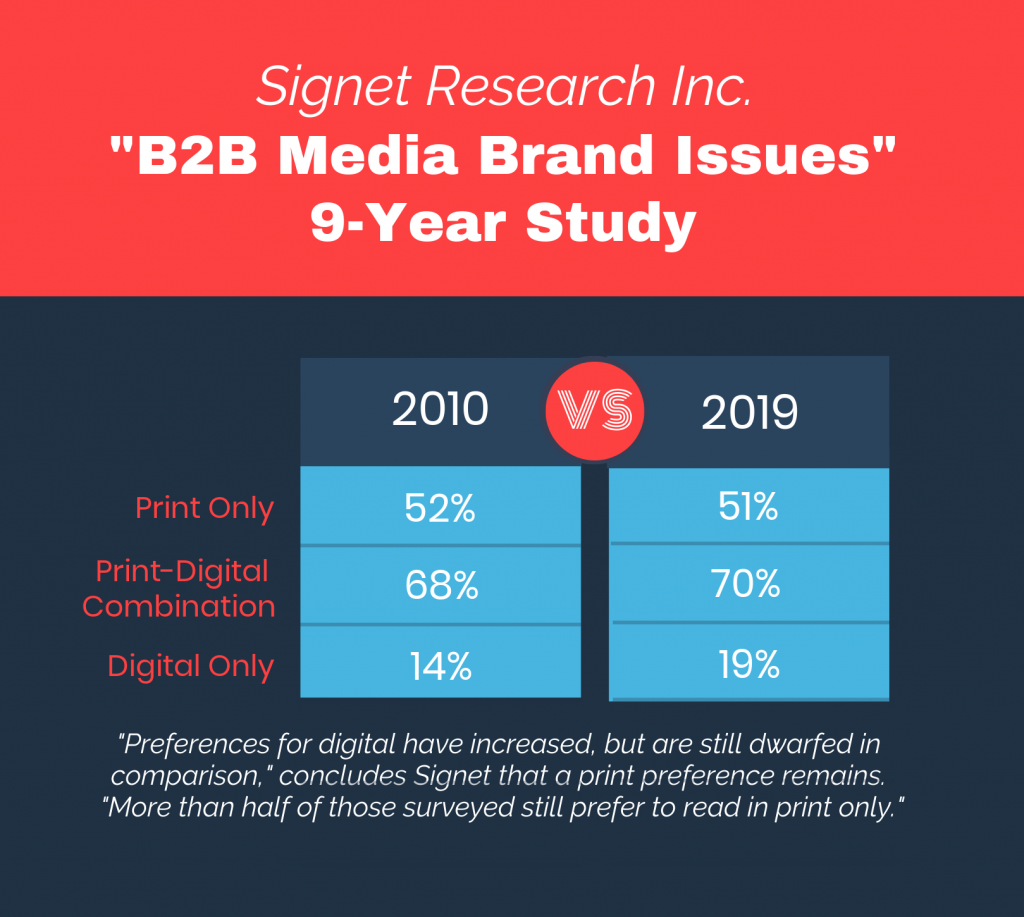 By Mike Lessiter, mlessiter@lessitermedia.com
By Mike Lessiter, mlessiter@lessitermedia.com
President, Lessiter Media
I was at a recent peer group meeting when a roundtable conversation side-barred over to a discussion on print vs. digital marketing. All kinds of opinions flutter about on this topic, including “print is dead,” passionate replies of “No, it’s not!” and debates that reveal more about the marketer than the audience. I tend to sit back and listen, though I’d maintain the answer is different based on each audience and the type of knowledge they’re seeking to make sound decisions.
It is a thought-provoking discussion for a business-to-business media company like ours, who can deliver virtually any marketing channel desired — print, digital, in-person conferences, focus groups, online learning, custom publishing and automated lead funnels, to name a few.
I returned from that meeting with an assignment for our Audience Development Team — to take the mystery out of this question and how advertisers’ customers — and our qualified subscribers — actually behave. Here’s a just-completed report from one of our titles, layered from an analysis of the website and e-newsletters, third-party audited circulation statement and OMEDA unified audience database.
Asked for their preference, 63% still select print for their choice of how to receive their B2B information. That means that despite the marketing buyer’s personal preferences, 6 out of your 10 best customers and prospects in this segment rely on print for the industry and trends information that they can "lean into." Takeaway: An absence from print is an absence from more than 1/3 of the pre-qualified audience.
Again, our business can respond to most any marketer's request that involves our select audiences, and digital can be a convenient “default” to what many marketers “think” they want. My advice: study your customer and prospects via personal conversations and focus groups. Get “into it” about the workflow of their information processing and discussions, and what the daily realities for starting the decision-making process are — in their own place of business. The yields from this kind of interaction are far-reaching.
In the specialized information space, print remains the most influential driver of branding that can change market shares. And, it directly contributes to the success (and speed and cost) of the lead-generating activities that must follow. The infographic below is an independent study that just passed my desk this week that shares a similar trend to what our own Audience Development Team concluded.
What is it that can change the hearts, minds and wills of your customers, or customers’ customers? Consider the permanence of the print message and the trust that accompanies the customer's recognition that you invested skin in the game in getting highly targeted messaging to them.
Please let me (mlessiter@lessitermedia.com) know what you think. Now in its 79th edition, The Lessiter Marketing Minute is a dialog that works best when we hear from you as well.


